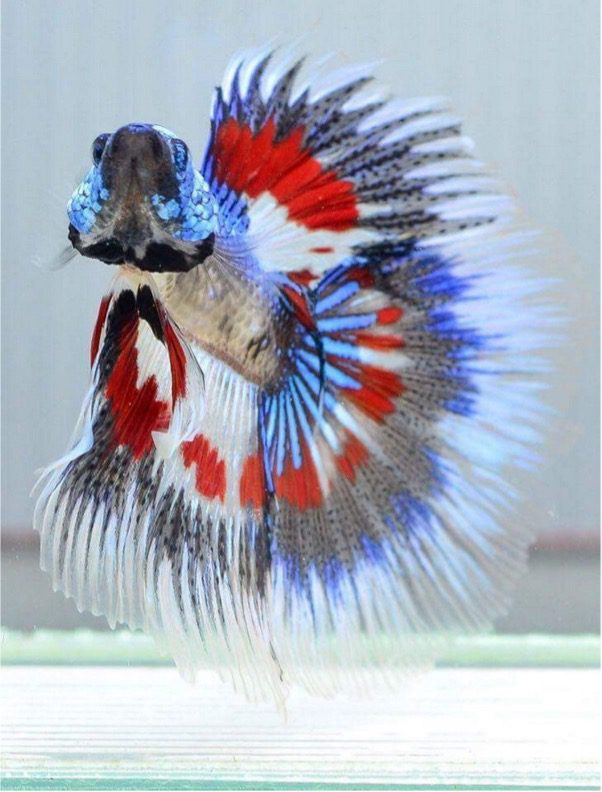Betta fish, also known as Siamese fighting fish, are among the most popular and visually striking aquatic pets you can own. Their vibrant colors and flamboyant fins make them a captivating addition to any home or office. While they are often marketed as low-maintenance pets suitable for small bowls or vases, the truth is that Betta fish require a more carefully considered environment and consistent care to thrive.
The allure of the Betta fish lies not just in their appearance, but also in their unique personality. Unlike many other types of fish, Bettas have a range of behaviors and temperaments that can be fascinating to observe. However, it's crucial to remember that their well-being is closely tied to the conditions in which they live. A stressed or sick Betta is not just an unhappy fish; it's a sign that something in their environment needs attention.
What Makes Betta Fish Unique
The Betta fish is not just another pretty face in aquatics; they have a range of unique attributes that set them apart from other fish species. Understanding these nuances can not only increase your appreciation for this fascinating creature but also help you provide them with the specialized care they deserve.
Origin and Habitat
Betta fish are native to Southeast Asia, primarily in Thailand, Cambodia and Vietnam. In the wild, they often inhabit shallow, slow-moving bodies of water like rice paddies, ponds and streams. This natural habitat has influenced their adaptability to various water conditions, although there are optimal parameters for their well-being in captivity.
Physical Appearance
One of the most striking features of the Betta fish is their appearance. With an array of vibrant colors—ranging from deep blues and bright reds to radiant purples—and unique fin shapes, Bettas are a sight to behold. Males are generally more colorful and have larger, more elaborate fins compared to females. Some popular types of Betta fish, based on fin shapes, include the Veil Tail, Crown Tail and Halfmoon.
Temperament and Behavior
Despite their beauty, Betta fish are known for their aggressive tendencies, particularly among males. This is why they're often called Siamese fighting fish. Two males in close proximity are likely to engage in territorial disputes, which can result in physical harm.
However, their feisty demeanor also makes them interactive pets; they often respond to their owners and can even be trained to do simple tricks like swimming through hoops.
Bettas are also unique in their breathing; they are labyrinth breathers, which means they can breathe atmospheric air in addition to extracting oxygen from water. This feature allows them to survive in less-than-ideal water conditions, but it's not an excuse to neglect proper tank maintenance and water quality.
Intelligence
Bettas are relatively intelligent for fish and they can recognize their owners, respond to stimuli and even display signs of boredom, if not sufficiently engaged. Their curiosity often leads them to explore their surroundings, which is why a well-decorated and safe habitat is essential for their mental well-being.
Setting Up the Perfect Environment
Creating the perfect habitat for your Betta fish is essential for their well-being. An optimal environment not only makes the fish more comfortable but also reduces stress, which is a leading cause of illness in aquatic pets. Here’s what you need to consider to set up a home your Betta fish will love.
Minimum and Recommended Tank Sizes and Shapes
Contrary to popular belief, a small bowl or vase is not suitable for Betta fish. A minimum of 5 gallons is generally recommended, although a 10-gallon tank is ideal for providing ample swimming space and for maintaining stable water conditions.
Importance of Having a Lid
Betta fish are known jumpers and it’s not uncommon for them to leap out of their tank if given the opportunity. Always ensure your tank has a lid to prevent any accidental escapes.
Pros and Cons of Different Tank Shapes
While Betta fish aren’t overly fussy about the shape of their tank, long, shallow tanks are generally better than tall, narrow ones. This mimics their natural environment and allows them to access surface air more easily.
Filtration and Aeration Suitable for Betta Fish
A gentle filter is recommended for a Betta fish tank. Sponge filters are often ideal as they provide both mechanical and biological filtration without creating a strong current.
Need for Gentle Water Flow
Due to their long, flowing fins, Betta fish prefer water with minimal current. Too strong a water flow can stress them and make swimming difficult.
Importance of Proper Aeration
While Betta fish can breathe atmospheric air, good aeration in the tank is still important for overall water quality. Devices like air stones can help in this regard.
Ideal Water Temperature and Parameters
Betta fish are tropical creatures; hence, they thrive in warm water. A temperature range of 76–82°F (24–28°C) is generally recommended.
pH Levels
A pH range of 6.8 to 7.4 is ideal for Betta fish, mimicking their natural water conditions.
Hardness and Alkalinity
Soft to moderately hard water is preferable, with a general hardness (GH) of 4–12 dH and carbonate hardness (KH) of 3–8 dH.
Suitable Plants and Decorations for Betta Tanks
Live plants like Java Moss, Java Fern and Anubias are excellent choices as they provide hiding spots and make the Betta fish feel more at home.
Importance of Hiding Spots
Betta fish enjoy having places to hide. Providing caves or leafy cover can help reduce stress.
Safety Tips for Choosing Tank Decorations
Avoid any decorations with sharp or jagged edges that could tear the delicate fins of your Betta fish. Make sure all ornaments are non-toxic and aquarium-safe.
Social Behavior and Tank Mates—Are Betta Fish Loners or Community Fish?
Understanding the social behavior of Betta fish is crucial when considering adding other fish or aquatic animals to their environment. While they are beautiful and fascinating creatures, Bettas are also known for their territorial nature, which can make selecting compatible tank mates a challenging task.
Are Betta Fish Suitable for Community Tanks?
Betta fish have a reputation for being solitary creatures, especially the males. Male Bettas are highly territorial and can show aggression towards other fish sharing their space.
Females can be slightly more sociable but still have their limits. Therefore, while it’s possible to have a Betta in a community tank, one should exercise extreme caution.
Compatible Tank Mates
- Cory Catfish
- Neon Tetras
- Ghost Shrimp
- Snails
These species are generally peaceful and occupy different levels in the tank, reducing the chance of territory disputes.
Incompatible Tank Mates
- Other Bettas (especially males)
- Guppies
- Angelfish
- Any fish with bright colors and long fins
These species are likely to trigger the Betta’s aggressive tendencies.
Mating Behavior and Betta Fish Breeding
Betta fish have a unique breeding behavior known as “bubble nesting.” The male blows bubbles at the water surface, which will hold the eggs once the female releases them. Breeding Betta fish requires specific conditions, including optimal water parameters and a separate breeding tank.
Suitable Conditions for Breeding
- Stable water temperature around 80°F (27°C)
- Lowered water level to facilitate bubble nesting
- Plenty of hiding spots for the female
It’s crucial to remove the female from the breeding tank shortly after the eggs are laid, as the male takes over the role of guarding the nest and may become aggressive towards the female.
When To Separate or Introduce New Tank Mates
When introducing new tank mates, use a quarantine tank first to observe the new additions for any signs of illness. Gradually acclimate them to the main tank to minimize stress for all involved parties.
Signs Your Betta Is Stressed or Aggressive
- Flaring gills
- Rapid swimming
- Chasing or nipping at tank mates
If you notice these behaviors, it may be time to separate your Betta from its tank mates or reconsider your choice of companions.
Common Health and Well-Being Issues
Ensuring the health and well-being of your Betta fish is paramount to a long and fulfilling life for your aquatic pet. Like all pets, Betta fish are susceptible to various health issues, some of which can be avoided with proper care and maintenance. Here’s what you need to know about keeping your Betta fish healthy.
Fin Rot
- Symptoms: Frayed or discolored fins
- Causes: Poor water quality, bacterial infection
- Treatment: Improve water quality, antibiotics
Swim Bladder Disease
- Symptoms: Difficulty in swimming, floating on one side
- Causes: Overfeeding, poor diet
- Treatment: Fasting, peas and sometimes medication
Ich
- Symptoms: White spots on the skin, fins and gills
- Causes: Parasitic infection
- Treatment: Medication, raising water temperature
Dropsy
- Symptoms: Swollen belly, scales sticking out
- Causes: Bacterial infection
- Treatment: Quarantine, antibiotics (although prognosis is often poor)
Routine Maintenance and Cleaning
Maintaining a clean and stable environment is essential for your Betta fish’s overall well-being. Regular maintenance not only helps keep the water parameters in check but also prevents the buildup of harmful bacteria and algae. Here’s a comprehensive guide on how to keep your Betta fish’s home in optimal condition.
Daily Checks
- Monitor water
- Check the filter and other equipment for proper usage
- Observe your Betta for any signs of stress
Weekly Checks
- Test water parameters including pH, ammonia, nitrites and chemicals
- Replace 10–20% of the tank’s water
- Inspect the tank for any signs of algae
Monthly Checks
- Thoroughly clean the filter and replace filter media as needed
- Check all tank decorations for wear and tear; replace if needed
- Prune and trim live plants to keep them a manageable size
How To Safely Siphon the Gravel
The first step in regular maintenance involves siphoning the gravel. Using a specialized gravel vacuum helps you remove waste and debris efficiently without disturbing your Betta fish or rearranging the decorative elements in the tank.
How To Clean the Filter
For the health of your Betta, keeping the filter clean is of utmost importance. Use tank water to rinse out the filter media and avoid tap water to preserve the beneficial bacteria essential to your aquatic ecosystem. Keep an eye on the filter’s condition and replace its cartridges or media as recommended by the manufacturer.
How To Clean Tank Decorations and Plants
Your Betta’s environment isn’t just about water quality; it’s also about aesthetics and stimulation. That’s why you should routinely remove and wash the decorations and plants in your tank. Warm water is sufficient for this—just remember to scrub off any algae or dirt. It’s important to steer clear of soaps and detergents, as these can be harmful to your fish.
How To Sterilize Equipment
Beyond the tank itself, maintenance extends to the equipment you use for its upkeep. Sterilization is key here. Boiling water or a mild bleach solution can be effective for sterilizing items like nets and algae scrapers. Remember to rinse thoroughly to remove any traces of bleach.




